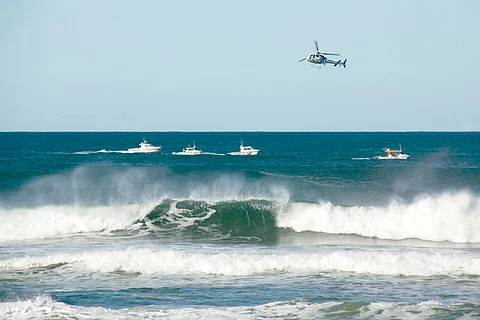
- Destinations
- Experiences
- Stay
- What's new
- Celebrating People
- Responsible Tourism
- CampaignsCampaigns
- Subscribe
- Buy Now

A powerful 8.8-magnitude earthquake has triggered a series of tsunami warnings and evacuation orders stretching across Japan, the US west coast and parts of the Pacific, after the shallow quake hit near Russia’s Kamchatka Peninsula on Wednesday, July 30. Waves up to four metres high were reported in the remote region.
The earthquake, the strongest in the region since 1952, struck at a depth of 19.3 km and was centred 126 km south-east of Petropavlovsk-Kamchatsky, a city along Russia’s Avacha Bay, the US Geological Survey said.
A tsunami with a height of three to four metres was recorded in parts of Kamchatka, with several people reporting injuries. The wave also hit the coastal area of Severo-Kurilsk, the main settlement on Russia’s Kuril Islands in the Pacific, according to reports. A local governor said that the residents were safe and staying on high ground until the threat of a repeat wave was gone.
The Pacific Tsunami Warning Center said waves of one to three metres above tide level were possible along some coastal areas of Hawaii, Chile, Japan, the Solomon Islands, Russia and Ecuador.
Japan issued evacuation warnings and the country’s weather agency said the first waves measuring 30 cm reached the eastern coast of Hokkaidō. Workers at the stricken Fukushima nuclear plant in northeast Japan were evacuated, with plant operator Tepco saying that “no abnormality” had been observed at the site. The Fukushima Daiichi plant went into meltdown after being hit by a tsunami in 2011.
In the US, tsunami warning sirens blared in Honolulu and people were told to move to higher ground. The National Tsunami Warning Center, based in Alaska, issued a tsunami warning for parts of the Alaska Aleutian Islands, and a watch for portions of the West Coast, including California, Oregon, Washington and Hawaii.
New Zealand’s disaster management agency warned that the country’s coastal areas could expect “strong and unusual currents and unpredictable surges at the shore.” In a national advisory alert, Civil Defence New Zealand said there was no immediate need to evacuate but said citizens should stay away from beaches and shore areas.
A warning was issued that tsunami waves of less than 0.5 metres could hit some parts of Indonesia. The tsunami could reach some coastal cities and towns in the Papua region, North Maluku province and Gorontalo province, a local agency said in a statement.
Mexico said it was mobilising authorities at all levels of government to keep its population away from Pacific beaches. The Mexican Navy warned that strong currents are expected at port entrances from Baja California in the northwest to Chiapas in the south of Mexico.
Kamchatka and Russia’s Far East sit on the Pacific Ring of Fire, a geologically active region that is prone to earthquakes and volcanic eruptions. Japan, also part of the active seismic zone, is one of the world’s most quake-prone countries.
Earlier in July, five powerful quakes—the largest with a magnitude of 7.4—struck in the sea near Kamchatka. The largest quake was at a depth of 20 km and was 144 km (89 miles) east of the city of Petropavlovsk-Kamchatsky, which has a population of 180,000.
Move to higher ground: Immediately evacuate to a location at least 100 feet above sea level or several miles inland, away from the coast.
Stay informed: Continuously monitor official alerts via radio, TV, or emergency apps for updates on the tsunami’s status.
Avoid coastal areas: Do not return to beaches or low-lying areas until authorities confirm it is safe.
Listen to evacuation instructions: Follow directions from local emergency services and authorities, even if the tsunami waves seem far off.
Stay away from bridges and overpasses: Tsunamis can cause structural damage, so avoid crossing bridges or standing near them during an alert.
Be prepared for aftershocks: After the initial wave, aftershocks can occur, which may trigger additional tsunamis or flooding.
Use a disaster kit: Have essentials like water, food, medications and a flashlight ready in case you're cut off from help.
(With inputs from multiple news reports)
